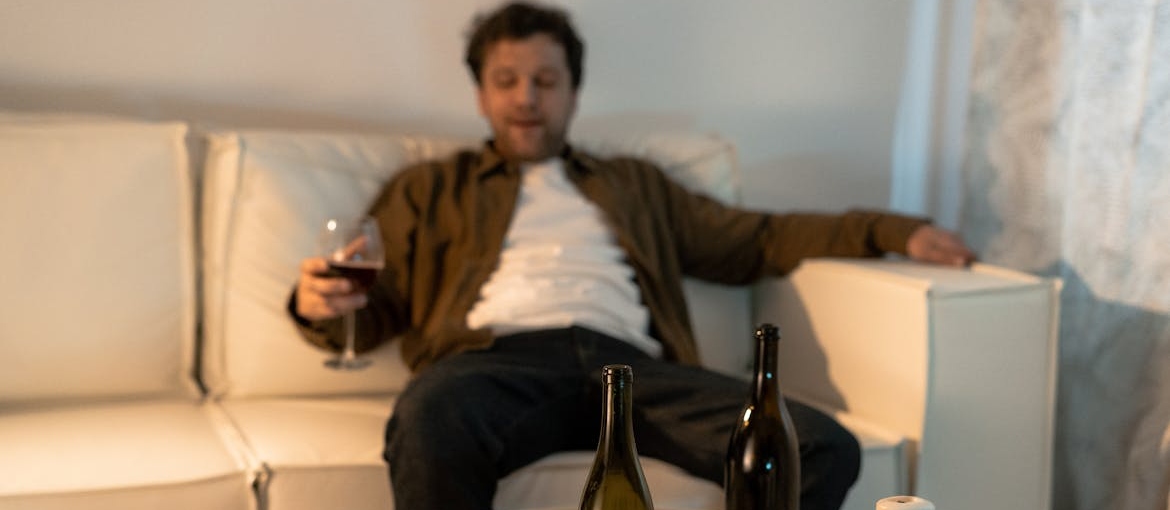Watching movies and series is one of everybody’s favorite pastimes. However, we tend to forget their impact on our thoughts, emotions, and behavior. This can pose a significant risk, particularly when numerous misunderstandings and myths emerge. Such is the case with portrayals of alcohol and drug abuse in movies and series. However, we at Harmony Ridge Recovery WV recognize that there are movies and series that can have an educative effect and raise awareness about addiction and its impact on society. If you are a fan of movies and series and are curious about questions like, what is the movie based on alcohol addiction or what drugs are commonly abused in movies, we’ll provide reliable information about it. We will explore both the negative and positive impacts of different portrayals of alcohol and drug abuse in movies and provide recommendations.
The Glamorization of Substance Use in Pop Culture
Many films and TV shows depict alcohol and drug use as glamorous, rebellious, or fun. By making them a focal point of comedy movies, they represent drugs and alcohol as entertaining. It is not uncommon for a main character to discover their true love while intoxicated, thereby adding a romantic touch to substance abuse. Here are a few examples of movies that glamorized substance:
- The Wolf of Wall Street. This movie follows a stockbroker marking grand success on the stock market. Once he becomes rich, substance abuse becomes a regular occurrence. Throughout the movie, the main character is using cocaine, alcohol, and prescription drugs. However, we do not see any negative consequences. Moreover, thanks to drugs, he’s able to maintain his lifestyle. This way, alcohol and drugs are portrayed as companions of a luscious lifestyle and, to an extent, as a way to maintain it
- The Hangover. This comedy trilogy takes fun related to substance abuse to the next level. A group of main characters is experiencing a true adventure with many dangerous situations, out of which they come unharmed. Aside from creating memorable experiences, substances seem to have no negative effects. So much so that characters go back to reliving this adventure of theirs.
- Project X, Superbad, and similar teen comedies. These popular teen comedies revolve around experimenting with alcohol, drugs, and sex, creating this false image that to have fun and look cool, you have to enjoy illicit substances. Not only do these movies minimize the negative impact of substance abuse, but they also promote it as a means to be relevant in social groups and fit in with the social norms of popular kids.

Stereotypes and Misrepresentations of Addiction
Why is it important how is drug use portrayed in movies? Because movies and series as a medium impact how we perceive the world and can create and foster stereotypes and misconceptions of addiction. Oftentimes, addiction is shown in extremes, either as a tragic downfall or as a comedic element, failing to explain the underlying causes of many addiction stories. Some of the misconceptions typically portrayed by 7th art include:
- Functioning alcoholics seem to live normal lives. This misconception creates an idea that one can be an alcoholic without experiencing any negative aspects of alcoholism. While functioning alcoholics function relatively efficiently, they still struggle and experience all major issues non-functioning alcoholics experience as well.
- Drug dealers/users are always villains or rock stars. Movies rarely use regular people as their main characters and instead create a false image that addiction-related problems cannot happen to everyone. This can create a false sense of security from developing addiction.
- Rehab is a quick fix, not a long-term process. While some movies show multiple attempts at going into rehab, they’re still often portrayed as luxurious experiences, quick fixes, and the simple act of joining a support group program. The role of individual therapy for addiction and its length can be underestimated, failing to show how much personal work is behind quitting drugs or alcohol.

The Influence on Real-Life Behavior
By now, the majority knows that what we consume impacts how we see the world and behave. The so-called theory of social learning explains the reason behind it. This theory was introduced by Albert Bandura, who even conducted experiments with kids who watched videos and were then asked to approach the same object a person in the video did. The kids were imitating the model’s behavior.
This famous psychologist concludes that we learn from models we observe. The stronger the identification is with the model, the more likely we will adopt their behavior as ours. Learning occurs through observation, imitation, and modeling and is influenced by attention, motivation, attitudes, and emotions. An important element of this process is the observation of consequences; the model suffers for its behavior.
Considering all this, it becomes pretty easy to understand how movies and TV series impact our behavior. Furthermore, it becomes clear that scenes of alcohol and drug abuse in movies shape how we see substance abuse. Movies and series glamorizing substance abuse can make a person believe that it has no negative consequences and that it can even have a positive contribution to their life.

Movies and Shows That Accurately Depict Addiction
Some productions focus on the real struggles of addiction and recovery. If you wish to see a more realistic portrayal of addiction in movies, invest your time in the following movies.
Requiem for a Dream
Requiem for a Dream is a movie that, once seen, cannot be forgotten. It depicts a downward spiral of heroin addiction. It follows four different individuals, showing us their physical and emotional alterations, resulting in deterioration, delusions, and desperation. The ending is devastating as all four characters are experiencing painful destinies, from having to exchange sex for drugs to going to jail and losing their limbs due to bodily damage to going to treatments, leaving them in catatonic states of dissociation.
Trainspotting
This British movie follows a heroin addict and provides us with vivid and scary scenes of hallucinations. The movie somewhat glamorizes heroin use, with a famous sentence suggesting that a heroin high is more pleasurable than a thousand orgasms, portraying it as the world’s most alluring experience. However, it also portrays many negative aspects of heroin use, such as its association with HIV, child neglect resulting in death, jail time, and the difficulty of quitting abruptly. Additionally, it shows the impact of peer pressure and social environment on continuous drug use.
Beautiful Boy
Beautiful Boy speaks of the family impact of substance abuse. Other than highlighting the importance of environmental factors in addiction. It also sends an important message that addiction can happen to anyone regardless of their background, economic status, or life story. The story is told from two different perspectives—from the perspective of the boy who became addicted to stimulants (methamphetamines) and the perspective of his father, who’s trying to support him by getting him into a stimulants rehab.

Euphoria
This series offers a raw and controversial portrayal of teen addiction. Substance use and other extreme content are closer to harsh reality than fiction. Addiction experts find this series to be very realistic, especially when portraying the prevalence of substance abuse, in particular opioids, among young people. It also provides us with the different addiction stories contributing to explanations of some underlying causes of addiction. What it fails to portray realistically are the available resources to fight addiction. The reality is that you can find good opiate rehab West Virginia options to help you overcome struggles with opioids.
A Star Is Born
This movie has four versions, the latest with Lady Gaga and Bradley Cooper as the main protagonists. It tells a story about a couple in the music industry. One of them struggles with addiction, and the movie realistically shows how addiction impacts relationships. The movie also gives us a story that explains the underlying causes of addiction and attempts to address it.
It can serve as a cautionary tale as our main character fails to treat addiction as a disease and goes to a luxurious rehab instead of focusing on getting the evidence-based treatments he needs. He gets discharged too early, and the story ends with his suicide.
Seek Help for Your Addiction Problems
What the majority of movies and series failed to showcase is a realistic recovery journey. Even when rehab is part of the plotline, the time can be heavily underestimated, and therapies and treatments are shown to be a smooth ride. In actuality, the recovery process is not linear but involves fluctuations and requires a significant amount of time to yield results.

If you or someone you care about is struggling with substance abuse, we suggest you seek professional psychotherapy for addiction. The acute state and underlying causes of your addiction can be treated with many evidence-based methods.
- Cognitive behavioral therapy for substance use disorders (CBT) focuses on identifying patterns of thinking, feeling, and believing that are irrational or dysfunctional and are resulting in maladaptive behaviors and coping mechanisms, such as substance abuse. CBT also helps reframe those patterns, acquire skills, and develop healthy coping strategies.
- Dialectical behavior therapy for addiction (DBT) can serve as a complementary treatment, and it deals mostly with emotion management. It helps strike a fine balance between change and acceptance and helps you abandon a black-and-white view of the world.
The best results in treating substance abuse are achieved with holistic therapy for addiction. A holistic approach implies taking care of the body, mind, and spirit equally. Treating addiction this way ensures lifelong results and the lifestyle change that supports it.
How Media Can Be a Tool for Awareness and Education
As you’ve seen, not every movie celebrates substance abuse or glamorizes it. Sometimes, films and TV shows serve as a cautionary tale and can even be seen as an educational tool. Some believe, for instance, that Requiem for a Dream is an anti-drug abuse PSA (Public Service Announcement). PSA and responsible storytelling can help change the narrative on addiction.
Also, documentaries like The Anonymous People showcase real-life recovery journeys. Realistic representations of substance addiction can break the stereotypes and de-glamorize the lives of addicts. Objective representation is important not only for the sake of understanding addiction better but also for exploring real-life narratives related to the causes of addiction and relapses.
Finally, for movies to serve the purpose of educating others, a conversation should follow screening. Especially when talking to youngsters, setting aside some time to discuss what was seen and what can be seen in real life can offer reflection and clarification of the lives of addicts.

What These Movies Don’t Always Show
Movies and TV shows shape how we think, feel, and act, often without us even realizing it. That’s why it matters how addiction is shown on screen. Drug abuse in movies can sometimes seem cool or harmless, but that’s far from the truth. A stereotypical portrayal of drug abuse in movies can make people feel judged, misunderstood, or even afraid to ask for help. If you’re struggling or know someone who is, you’re not alone. Help is real, and recovery takes time and support—not quick fixes. Watching honest and real stories can help break harmful myths and open up important conversations. Take the step to learn more, ask questions, and find support. Addiction is treatable, and seeking help is a strong, smart choice. Your story can change, and it starts with reaching out.
References:
https://time.com/6152502/euphoria-hbo-teenage-drug-use/
https://www.bbc.co.uk/programmes/articles/3yxbbg2tCtmt9DjDnvHZ68n/timothee-chalamet-on-how-he-portrayed-a-story-of-addiction#:~:text=Beautiful%20Boy%20aims%20to%20address,%2C%20wealth%2C%20or%20life%20story.&text=%E2%80%9CSomeone%20told%20me%20the%20other,liked%20that%2C%E2%80%9D%20Chalamet%20said.
https://hr.berkeley.edu/grow/grow-your-community/wisdom-caf%C3%A9-wednesday/how-social-learning-theory-works
https://www.researchgate.net/publication/267750204_Bandura’s_Social_Learning_Theory_Social_Cognitive_Learning_Theory



